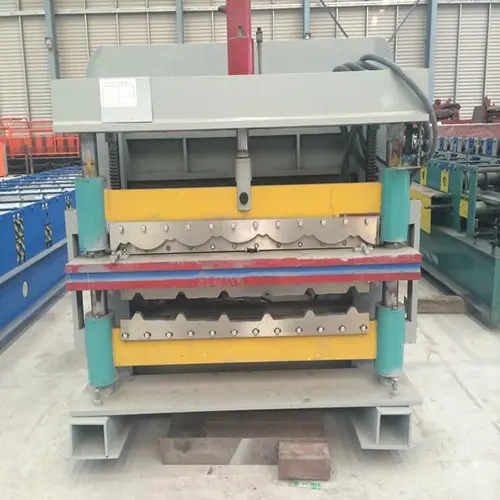
The High-Frequency Welded Tube Mill Advancements and Applications
High-frequency welded tube mills have revolutionized the manufacturing of welded tubes and pipes, representing a significant advancement in metal fabrication technology. Utilizing high-frequency induction heating, these mills efficiently produce high-quality welded tubes for various applications, including construction, automotive, aerospace, and furniture industries. This article discusses the operational principles of high-frequency welded tube mills, their advantages, and applications in modern manufacturing.
Operational Principles
The high-frequency welded tube mill operates on a process known as high-frequency welding (HFW). It begins with the feeding of flat steel strips into the mill, which is then formed into a circular shape using a series of rollers. This shaping process is often referred to as tube forming. The edges of the strip are brought together and subjected to high-frequency induction heating, which raises the temperature of the metal to the point where it becomes malleable without the need for filler material.
Once the edges reach the necessary temperature, they are pressed together using welding electrodes, creating a strong, continuous bond. The welding process occurs rapidly, often within milliseconds, which not only enhances efficiency but also reduces the chances of oxidation and contamination of the weld area. Following the welding, the tube is cooled and passes through several finishing processes, including sizing, cutting, and inspection, ensuring that the final product meets stringent quality standards.
Advantages of High-Frequency Welding
One of the most notable advantages of high-frequency welded tube mills is their speed and efficiency. The process can produce tubes at a significantly faster rate than traditional welding methods, allowing manufacturers to meet high demand with shorter lead times. Furthermore, the quality of the weld in high-frequency welding is superior, characterized by a uniform bond and minimal defects, which translates to greater structural integrity in the finished product.
Another advantage is the versatility of the technology. High-frequency welded tube mills can accommodate a wide range of materials, including carbon steel, stainless steel, and even some alloys, making them suitable for diverse applications. Additionally, the mills can produce tubes of varying diameters and wall thicknesses, further broadening their applicability in different sectors.

Cost-efficiency is another important factor. The high speeds of production reduce labor costs and energy consumption per unit produced, yielding a lower overall production cost. This economic advantage is crucial for manufacturers aiming to remain competitive in an increasingly globalized market.
Applications
High-frequency welded tubes are used across an array of industries. In construction, they are often employed in scaffolding, structural supports, and handrails due to their strength and durability. The automotive industry uses these welded tubes for components like exhaust systems and chassis, where reliability is paramount.
Furthermore, high-frequency welded tubes are integral in the production of piping systems for plumbing, HVAC, and industrial applications. Their resistance to corrosion and strength make them ideal for transporting fluids under pressure. In the furniture sector, high-frequency welded tubes are increasingly popular for manufacturing durable and stylish frames for chairs, tables, and other furnishings.
In the aerospace sector, where performance and precision are critical, high-frequency welded tubes provide lightweight yet sturdy solutions for various structural components. The ability to produce tubes with precise measurements ensures that they meet the rigorous requirements of aviation and aerospace applications.
Conclusion
The high-frequency welded tube mill represents a remarkable technological advancement in the production of welded tubes. Its combination of speed, quality, versatility, and cost-efficiency makes it an invaluable asset to manufacturers across multiple industries. As technology continues to evolve, the importance of high-frequency welded tube mills in meeting the demands of modern manufacturing will undoubtedly increase, leading to further innovations and applications in the field. With their ability to produce high-quality products rapidly and economically, high-frequency welded tube mills are set to remain at the forefront of tube manufacturing technology for years to come.